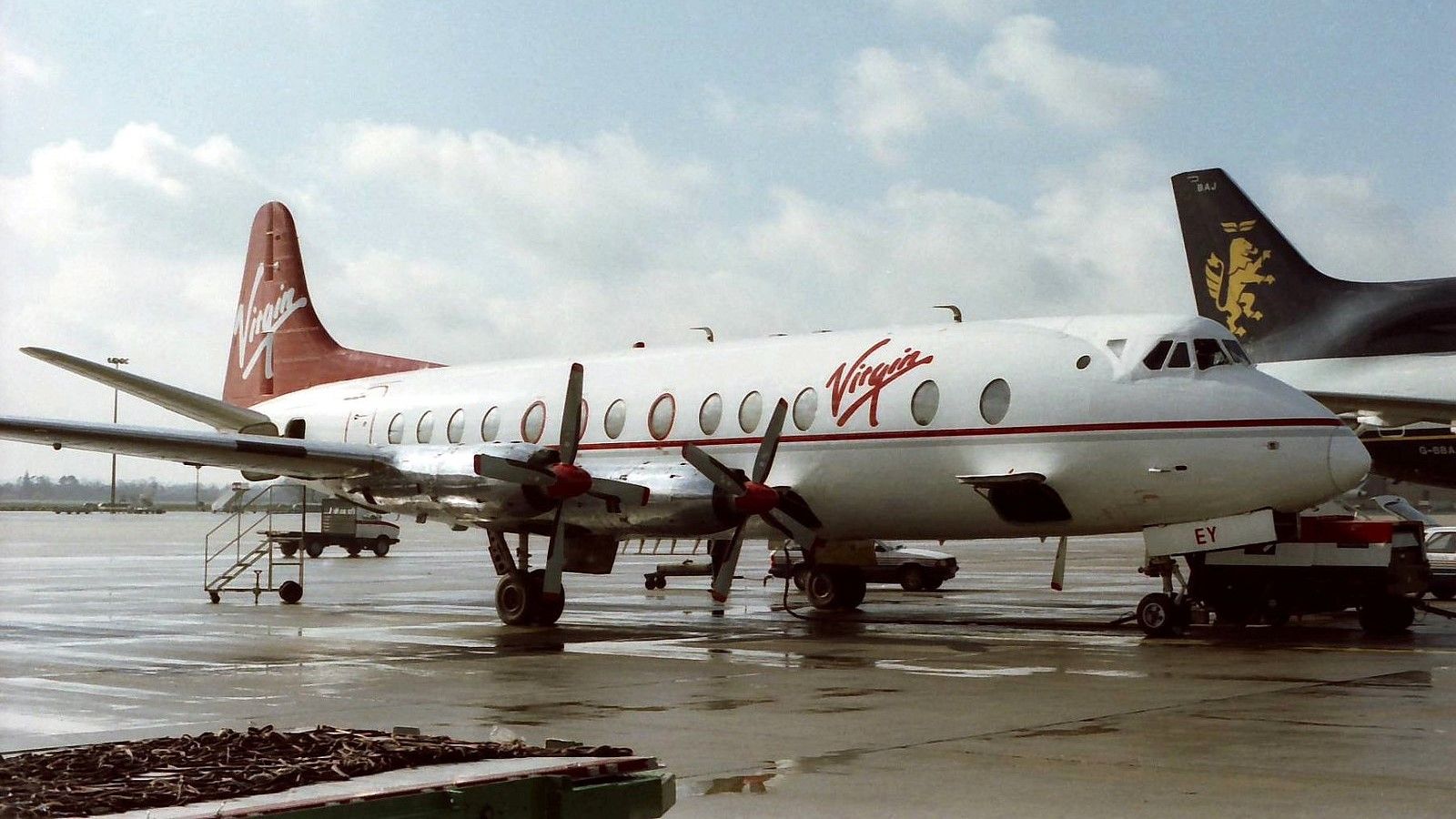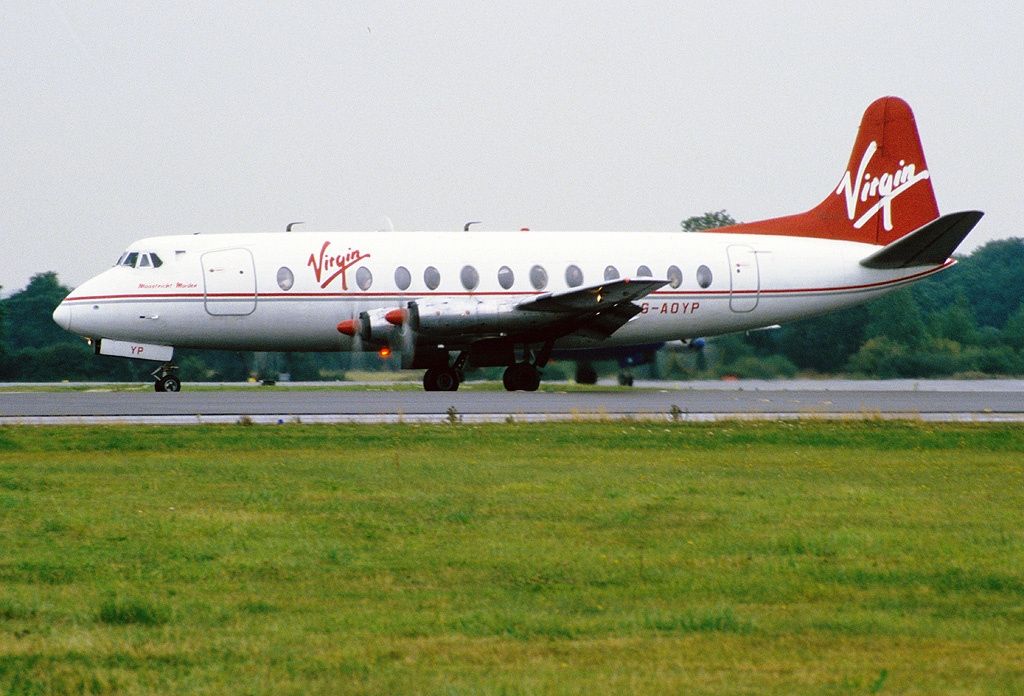Can you remember when Virgin Atlantic flew a British-made turboprop between London and a small Dutch city? You'd be excused for forgetting this brief chapter of the UK carrier's interesting history, but, nonetheless, it's a story worth telling. Let's examine Virgin Atlantic's short-lived Vickers flights from Maastricht to Gatwick.
Virgin Atlantic's turboprop flirtation
When we think of Virgin Atlantic, it's an airline that's all about the big widebodies. From the original Boeing 747 and Airbus A340 family aircraft of the early years to the modern Dreamliners and A350s of today, it's an airline that has built a business on always going long-haul. However, that wasn't always the case.
Indeed, back in the early days, Virgin Atlantic wanted to see if there was a market for connecting services to its London Gatwick (LGW) home from continental Europe, feeding traffic to its long-haul routes out of the UK. To explore this possibility, it began flying to Maastricht (MST) from London with a rather unusual plane.
Love aviation history? Discover more of our stories here!
The Vickers Viscount was a British-made turboprop, the first commercial turboprop to be produced. Its first flight took place in 1948, and it entered service in 1953 with British European Airways. Its big passenger windows and smooth ride made it a hit with airlines all over the world, with the 700 series selling a total of 445 models.
The 700 was followed by the stretched 800, with a capacity of 57-65 seats. BEA was to be the lead customer for this type again, with a designation of the Vickers Viscount 802 made specifically for the carrier. At its peak, BEA flew 77 of the type. But what was Virgin Atlantic doing with this aircraft, and why, of all places, Maastricht?
Establishing feeder flights
When Virgin Atlantic acquired the Vickers Viscount, low-cost carriers were not nearly as widespread as they are in today's industry. It wanted to capture more market share for its transatlantic flights and believed it could do so by sending a smaller aircraft to a critical point in Europe to act as a feeder to its London home.
Get the latest aviation news straight to your inbox: Sign up for our newsletters today!
Maastricht is a relatively small city in the southeast of the Netherlands. It was chosen not due to its wealthy or particularly travel-hungry population but for its strategic location in the northwest of Europe. Within a radius of around 70 miles (113 km), you can find the Belgian cities of Antwerp and Brussels and, to the east, a swathe of big German conurbations, including Dusseldorf, Cologne, and Bonn.
Its location in the Netherlands was also strategically important for another reason. This was pre-Open Skies in Europe, but there was an agreement in place between the UK, Ireland, and the Netherlands to allow free and easy travel by air. According to Virgin Atlantic, it damp leased four Vickers Viscounts from British Air Ferries, with BAF providing the plane and pilots but Virgin supplying the cabin crew.
Europe's first low-cost airline
The flights to Maastricht were timed to connect easily with Virgin's long-haul services, with a new route to Newark Liberty International Airport (EWR) being a particular target. However, that wasn't the only reason they were popular. Indeed, for the first time, Brits and Europeans had an easy, affordable way to fly, with fares offered between the UK and the Netherlands for a flat rate of just £19.
In providing Europe's first low-cost service in Europe, Virgin Atlantic unwittingly pre-empted something that would become a revolution in the coming years. The budget flights were ahead of their time, and the airline quietly dropped the short-haul connection after around five years of on-and-off, underperforming services. According to Simon Calder at The Independent, Sir Richard Branson once told him:
"There was concern that a low-cost, no-frills airline was detracting from the Virgin brand in the marketplace. We certainly missed an opportunity. It would have been fine for us to have both brands."
Long-haul flights ultimately took precedence
Knowing, as we do today, that low-cost carriers represent a huge market, there is certainly a strong case for Branson's assertion that a low-cost brand could have co-existed with Virgin Atlantic's mainline services. Had the carrier pushed ahead with developing a low-cost European network, things might have looked very different.
However, being a growing airline, Virgin Atlantic was also moving into the big league with its long-haul services at the time and chose to focus on that aspect of its business instead. Since then, there have been various flirtations with short-haul feeder networks such as Virgin Atlantic Little Red, but nothing has yet stuck. Today, ch-aviation.com shows that all 41 of its current aircraft are widebody twinjets.
As for Maastricht Aachen Airport, this facility is a crucial cargo hub today, but its passenger services are limited. For the most part, these consist of seasonal flights to holiday destinations, although Ryanair does serve certain routes from the airport all year round. One of these, funnily enough, goes to London, albeit to Stansted Airport (STN) rather than Gatwick, as Virgin Atlantic's Vickers Viscounts used to.
Did you ever fly onboard Virgin Atlantic's Vickers Viscounts? If so, what was it like? Let us know your thoughts and experiences in the comments!
Sources: ch-aviation.com, The Independent, Virgin Atlantic






.jpg)